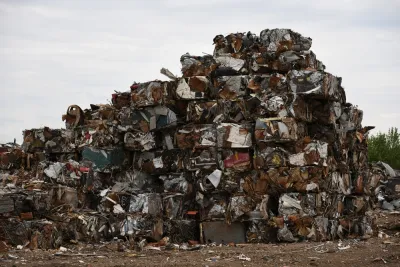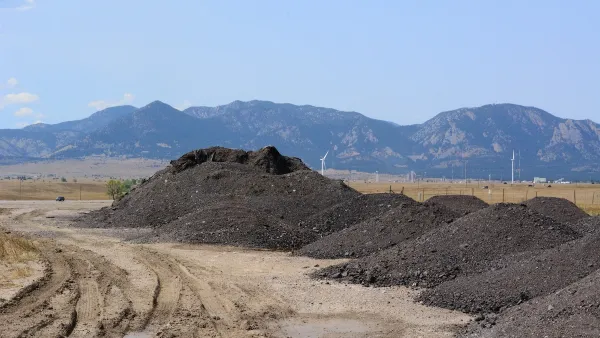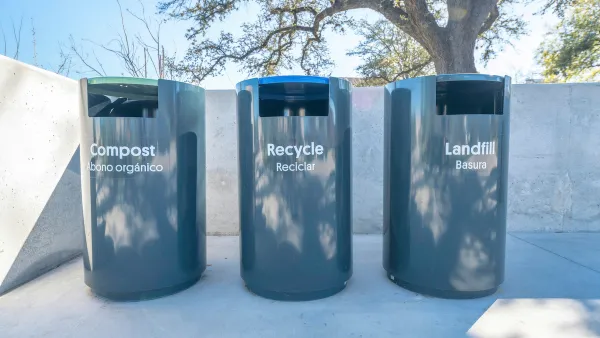A number of U.S. cities have set ambitious zero-waste goals, but reaching targets has been challenging. Turning waste into a viable commodity is one strategy to get materials out of the waste stream.

James A. Anderson takes a closer look at cities working to meet zero-waste targets, particularly efforts to commodify waste materials. Cities including San Francisco, Austin, and New York are struggling to reach their goals because of budget limitations, rising costs, and decreasing disposal options.
One approach has been economic development that seeks to remove trash from the waste stream. Austin’s 2011 zero-waste plan lays out strategies for diverting 90 percent of waste from landfills and incinerators by 2040. The city also has focused on commercial waste, which makes up a significant proportion of Austin's overall trash output. The [Re]Verse Pitch Competition is one attempt to engage entrepreneurs in waste disposal efforts, says Anderson:
The competition’s challenge is to devise a business plan that makes something marketable out of heaps of trash that nearby companies and nonprofits are eager to donate to the cause. In past years, starter donations have included expired canned goods from a food pantry, damaged pressboard furniture, distillery dregs, and even a mound of used mesh delivery bags.
The city has also put resources into the Austin Materials Marketplace, an online platform to link businesses and organizations with waste materials they can use and that otherwise would likely end up in landfills.
"Creating bonafide demand for plastic, paper, glass, food waste and other materials removed completely out of Austin’s garbage would not only give those programs a financial boost, it would transform zero-waste programs from budgetary burdens to possible economic boons," notes Anderson.
FULL STORY: Can Cities Ever Reach Absolute Zero (Waste)?

Analysis: Cybertruck Fatality Rate Far Exceeds That of Ford Pinto
The Tesla Cybertruck was recalled seven times last year.

National Parks Layoffs Will Cause Communities to Lose Billions
Thousands of essential park workers were laid off this week, just before the busy spring break season.

Retro-silient?: America’s First “Eco-burb,” The Woodlands Turns 50
A master-planned community north of Houston offers lessons on green infrastructure and resilient design, but falls short of its founder’s lofty affordability and walkability goals.

Test News Post 1
This is a summary

Analysis: Cybertruck Fatality Rate Far Exceeds That of Ford Pinto
The Tesla Cybertruck was recalled seven times last year.

Test News Headline 46
Test for the image on the front page.
Urban Design for Planners 1: Software Tools
This six-course series explores essential urban design concepts using open source software and equips planners with the tools they need to participate fully in the urban design process.
Planning for Universal Design
Learn the tools for implementing Universal Design in planning regulations.
EMC Planning Group, Inc.
Planetizen
Planetizen
Mpact (formerly Rail~Volution)
Great Falls Development Authority, Inc.
HUDs Office of Policy Development and Research
NYU Wagner Graduate School of Public Service



























